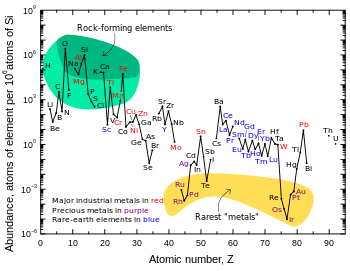In the United States, all states have passed laws that restrict age discrimination, and age discrimination is restricted under federal laws such as the Age Discrimination in Employment Act of 1967 (ADEA).
Credit transactions
The Equal Credit Opportunity Act (ECOA) is a United States law (codified at 15 U.S.C. § 1691 et seq.), enacted 28 October 1974, that makes it unlawful for any creditor to discriminate against any applicant, with respect to any aspect of a credit transaction, on the basis of (among other things) age, provided the applicant has the capacity to contract.
Elected office
Some U.S. political offices have qualifications that discriminate on the basis of age. For example, pursuant to the Constitution of the United States the President of the United States must be at least 35 years old; a United States senator must be at least 30; and a member of the United States House of Representatives must be at least age 25.
Employment
The Age Discrimination in Employment Act of 1967 (ADEA) (29 U.S.C. § 621 to 29 U.S.C. § 634) is a federal law that provides certain employment protections to workers who are over the age of forty, who work for an employer who has twenty or more employees. For protected workers, the ADEA prohibits discrimination at all levels of employment, from recruitment and hiring, through the employment relationship, and through decisions for layoffs or termination of the employment relationship. An age limit may only be legally specified for protected workers in the circumstance where age has been shown to be a "bona fide occupational qualification [BFOQ] reasonably necessary to the normal operation of the particular business" (see 29 U.S.C. § 623(f)(1)). In practice, BFOQs for age are limited to the obvious (hiring a young actor to play a young character in a movie), when a job is physically demanding (police, firefighters, military service), or when public safety is a concern (for example, in the case of age limits for pilots, truck drivers, and bus drivers).
Some states like New York and New Jersey including District of Columbia have laws that protect younger workers from reverse age discrimination, a practice not prohibited under the ADEA. In these jurisdictions, employers are legally prohibited from discriminating against workers 18 and older for their age unless a bona fide occupational qualification exists (i.e., employers may require bartenders to be at least 21 to comply with the legal drinking age).
In 1968, the EEOC declared age restrictions on flight attendants' employment to be illegal sex discrimination under Title VII of the Civil Rights Act of 1964.
Mandatory retirement
Mandatory retirement due to age is generally unlawful in the United States, except in certain industries and occupations that are regulated by law, and are often part of the government (such as military service and federal police agencies, such as the Federal Bureau of Investigation). Minnesota has statutorily established mandatory retirement for all judges at age 70 (more precisely, at the end of the month a judge reaches that age). The Minnesota Legislature has had the constitutional right to set judicial retirement ages since 1956, but did not do so until 1973, setting the age at 70. The Federal Age Discrimination in Employment Act, which became law in 1986, ended mandatory age-related retirement at age 70 for many jobs, not including the Minnesota judiciary; another exception was all postsecondary institutions (colleges, etc.) This exception ended on December 31, 1993. The Fair Treatment for Experienced Pilots Act (Public Law 110-135) went into effect on December 13, 2007, raising the mandatory retirement age for pilots to 65 from the previous 60.
Minimum wage
In 1986, the Fair Labor Standards Act was amended to allow the United States Secretary of Labor to provide special certificates to allow an employer to pay less than the minimum wage to individuals whose earning or productive capacity is impaired by age, physical or mental deficiency, or injury. These employees must still be paid wages that are related to the individual's productivity and commensurate with those paid to similarly located and employed nonhandicapped workers.
Federal minimum wage laws allow for employers to pay lower wages to young workers. Many state and local minimum wage laws mirror such an age-based, tiered minimum wage.
Employment of minors
In the United States, a person must generally be at least 14 years old to seek a job, and workers face additional restrictions on their work activities until they reach age 16. Additional age restrictions for workers vary by state. For example, many states require workers under 18 years of age to have work permits and not fulfill occupations deemed hazardous.
Notable case law
In Western Air Lines, Inc v Criswell 472 US 400 (1985) the United States Supreme Court held it was lawful to require airline pilots to retire at 60, because the Federal Aviation Authority forbid using pilots over 60 in aviation. But the Court held that refusing to employ flight engineers over that age was unjustified as there were no such FAA requirements. (Note that The Fair Treatment for Experienced Pilots Act (Public Law 110-135) went into effect on December 13, 2007, raising the mandatory retirement age for pilots to 65 from the previous 60.)
DeMarco v. Holy Cross High School 4 F.3d 166 (2nd Cir. 1993) was an employment discrimination case brought under the ADEA (Age Discrimination in Employment Act of 1967). The appellant, Guy DeMarco, was released from employment prior to his eligibility for tenure at the age of forty-nine. Holy Cross High School argued that it was not subject to ADEA laws, and if it were that this case against it was in violation of the Free Exercise Clause and the Establishment Clause of the First Amendment. The defendant also argued that the plaintiff failed to utilize the administrative remedies available. The court noted that other anti-discrimination statutes were held to be applicable to religious organizations, with the exception of statutes that prohibited discrimination based on religious belief. Since statutes prohibiting discrimination by race, gender and national origin were already found applicable to religious organizations, it was logical (and a reasonable interpretation of the legislative history) to extend the prohibition against age discrimination to religious organizations as well. The decision of the district court was reversed and the case remanded for further proceedings.
Hazen Paper Co. v. Biggins 507 U.S. 604 (1993) was a United States Supreme Court case in which the court held that a disparate treatment claim cannot succeed unless the employee's protected trait had a determinative influence on the employer's decisionmaking. This case concerned how Hazen Paper fired Biggins, 62, a few weeks before his service would have reached the required number of years for his pension to vest. Biggins sued Hazen Paper alleging a violation of the Age Discrimination in Employment Act of 1967.
In Kimel v. Florida Bd. of Regents, 528 U.S. 62 (2000), the United States Supreme Court held that state employees cannot sue states for monetary damages under the Age Discrimination in Employment Act of 1967 in federal court. The EEOC may still enforce the ADEA against states, and state employees may still sue state officials for declaratory and injunctive relief.
In Gomez-Perez v. Potter (2008), the United States Supreme Court allowed federal workers who experience retaliation as a result of reporting age discrimination under the law to sue for damages.
The United States Supreme Court, in Meacham v. Knolls Atomic Power Lab, 554 U.S. 84 (2008), held that the employer, not the employee, bears the burden of proving that a layoff or other action that hurts older workers more than others was based not on age but on some other “reasonable factor.”
In 2009, the United States Supreme Court issued its opinion on Gross v. FBL Financial Services, Inc.. In a 5–4 opinion, the Court ruled that private-sector plaintiffs must prove that age was the "but for" cause of the adverse employment action they are suing over. That is, the plaintiff must prove that age discrimination was the determining reason for the adverse employment action (e.g. the action would not have been taken 'but for' the plaintiff's age). However, the Supreme Court's opinion did not explicitly mention public-sector workers. A later opinion, University of Texas Southwestern Medical Center v. Nassar (2013) applied the same 'but for' standard to retaliation claims.
In September 2016, California passed state bill AB-1687, an anti-ageism law taking effect on 1 January 2017, requiring "commercial online entertainment employment" services that allow paid subscribers to submit information and resumes (such as IMDB Pro), to honor requests to have their ages and birthdays removed. The bill was supported by SAG-AFTRA's former and current presidents Ken Howard and Gabrielle Carteris, who felt that the law would help to reduce ageism in the entertainment industry. On 23 February 2017, U.S. District Judge Vince Girdhari Chhabria issued a stay on the bill pending a further trial, claiming that it was "difficult to imagine how AB 1687 could not violate the First Amendment" because it inhibited the public consumption of factual information. In February 2018, Girdhari ruled that the law was unconstitutional, arguing that the state of California "[had] not shown that partially eliminating one source of age-related information will appreciably diminish the amount of age discrimination occurring in the entertainment industry." The ruling was criticized by SAG-AFTRA, alleging that the court "incorrectly concluded there were no material disputed factual issues, while precluding the parties from acquiring additional evidence or permitting the case to go to trial". The ruling was eventually appealed, but the Ninth Circuit Court of Appeals upheld it in 2020.
Babb v. Wilkie, No. 18-882, , 589 U.S. ___ (2020), is a case of the United States Supreme Court in which the justices considered the scope of protections for federal employees in the Age Discrimination in Employment Act of 1967. Specifically, the Court ruled that plaintiffs only need to prove that age was a motivating factor in the decision in order to sue. However, establishing but for causation is still necessary in determining the appropriate remedy. If a plaintiff can establish that the age was the determining factor in the employment outcome, they may be entitled to compensatory damages or other relief relating to the end result of the employment decision.
Our Lady of Guadalupe School v. Morrissey-Berru, 591 U.S. ___ (2020), is a United States Supreme Court case involving the ministerial exception of federal employment discrimination laws. The case extends from the Supreme Court's prior decision in Hosanna-Tabor Evangelical Lutheran Church & School v. Equal Employment Opportunity Commission (2012) which created the ministerial exception based on the Establishment and Free Exercise Clauses of the United States Constitution, asserting that federal discrimination laws cannot be applied to leaders of religious organizations. The Supreme Court case Our Lady of Guadalupe School v. Morrissey-Berru, along with the consolidated St. James School v. Biel (Docket 19-348), both arose from rulings in the United States Court of Appeals for the Ninth Circuit that found that federal discrimination laws do apply to others within a religious organization that serve an important religious function but lack the title or training to be considered a religious leader under Hosanna-Tabor. One of those rulings in the United States Court of Appeals for the Ninth Circuit was the ruling in Morrissey-Berru v. Our Lady of Guadalupe School, in 2019, in which the United States Court of Appeals for the Ninth Circuit allowed a Catholic elementary school teacher's age discrimination suit to move forward. The religious organization challenged that ruling on the basis of Hosanna-Tabor. The Supreme Court ruled in a 7–2 decision called Our Lady of Guadalupe School v. Morrissey-Berru on July 8, 2020 that reversed the Ninth Circuit's ruling, affirming that the principles of Hosanna-Tabor, that a person can be serving an important religious function even if not holding the title or training of a religious leader, satisfied the ministerial exception in employment discrimination.rally funded programs
The Older Americans Amendments of 1975 (Pub.L. 94–135) is an Act of the 94th U.S. Congress amending the Older Americans Act of 1965. It prohibits discrimination based on age in programs or activities that receive federal financial assistance, for instance, financial assistance to schools and colleges, provided by the U.S. Department of Education.
Hate crimes
The District of Columbia and twelve states (California, Florida, Iowa, Hawaii, Kansas, Louisiana, Maine, Minnesota, Nebraska, New Mexico, New York, and Vermont) define age as a specific motivation for hate crimes.
Voting
The Twenty-sixth Amendment to the United States Constitution reads:
Section 1. The right of citizens of the United States, who are eighteen years of age or older, to vote shall not be denied or abridged by the United States or by any State on account of age.
Section 2. The Congress shall have power to enforce this article by appropriate legislation.
That amendment was ratified in 1971. Prior to that:
In 1943 and 1955 respectively, the Georgia and Kentucky legislatures approved measures to lower the voting age to 18.
On June 22, 1970, President Richard Nixon signed an extension of the Voting Rights Act of 1965 that required the voting age to be 18 in all federal, state, and local elections. In his statement on signing the extension, Nixon said:
Despite my misgivings about the constitutionality of this one provision, I have signed the bill. I have directed the Attorney General to cooperate fully in expediting a swift court test of the constitutionality of the 18-year-old provision.
Subsequently, Oregon and Texas challenged the law in court, and the case came before the Supreme Court in 1970 as Oregon v. Mitchell. By this time, four states had a minimum voting age below 21: Georgia, Kentucky, Alaska and Hawaii. In Oregon v. Mitchell (1970), the Supreme Court considered whether the voting-age provisions Congress added to the Voting Rights Act in 1970 were constitutional. The Court struck down the provisions that established 18 as the voting age in state and local elections. However, the Court upheld the provision establishing the voting age as 18 in federal elections. The Court was deeply divided in this case, and a majority of justices did not agree on a rationale for the holding. The decision resulted in states being able to maintain 21 as the voting age in state and local elections, but being required to establish separate voter rolls so that voters between 18 and 21 years old could vote in federal elections.
Activism
The Newsboys Strike of 1899 fought ageist employment practices targeted against youth by large newspaper syndicates in the Northeast. The strikers demonstrated across the city for several days, effectively stopping circulation of the two papers, along with the news distribution for many New England cities. The strike lasted two weeks, causing Pulitzer's New York World to decrease its circulation from 360,000 papers sold per day to 125,000. Although the price of papers was not lowered, the strike was successful in forcing the World and Journal to offer full buybacks to their sellers, thus increasing the amount of money that newsies received for their work.
The American Youth Congress, or AYC, was formed in 1935 to advocate for youth rights in U.S. politics. It ended in 1940.
The AARP was founded in 1958 by Ethel Percy Andrus (a retired educator from California) and Leonard Davis (later the founder of the Colonial Penn Group of insurance companies). Its stated mission is "to empower people to choose how they live as they age". It is an influential lobbying group in the United States focusing largely on issues affecting the elderly.
The Gray Panthers was formed in 1970 by Maggie Kuhn, with a goal of eliminating mandatory retirement; they now work on many social justice issues including eliminating ageism.
Youth Liberation of Ann Arbor started in 1970 to promote youth and fight ageism.
Three O'Clock Lobby formed in 1976 to promote youth participation throughout traditionally ageist government structures in Michigan.
OWL - The Voice of Women 40+ was founded as the Older Women's League by Tish Sommers and Laurie Shields, following the White House Mini-Conference on Older Women in Des Moines, Iowa in October 1980. It advocated for women in the U.S. who were age 40 and over. In March 2017, it was reported that the national organization had decided to disband, but local chapters may continue to function under the OWL name or possibly another name.
Old Lesbians Organizing for Change was founded in 1987; the mission of the organization is to "eliminate the oppression of ageism and to stand in solidarity against all oppressions" through “[the] cooperative community of Old Lesbian feminist activists from many backgrounds working for justice and the well-being of all old lesbians.” Their initial meeting was inspired by the publication of the book Look Me in the Eye: Old Women, Aging and Ageism by Barbara Macdonald and Cynthia Rich in 1983.
Americans for a Society Free from Age Restrictions formed in 1996 to advance the civil and human rights of young people through eliminating ageist laws targeted against young people, and to help youth counter ageism in America.
The National Youth Rights Association started in 1998 to promote awareness of the legal and human rights of young people in the United States.
The Freechild Project was formed in 2001 to identify, unify and promote diverse opportunities for youth engagement in social change by fighting ageism. In 2002 the Freechild Project created an information and training initiative to provide resources to youth organizations and schools focused on youth rights.



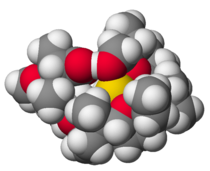

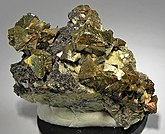





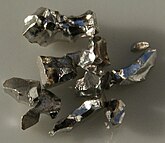

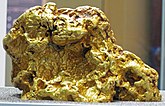
![]]](https://upload.wikimedia.org/wikipedia/commons/thumb/3/35/Cinnabar09.jpg/165px-Cinnabar09.jpg)
